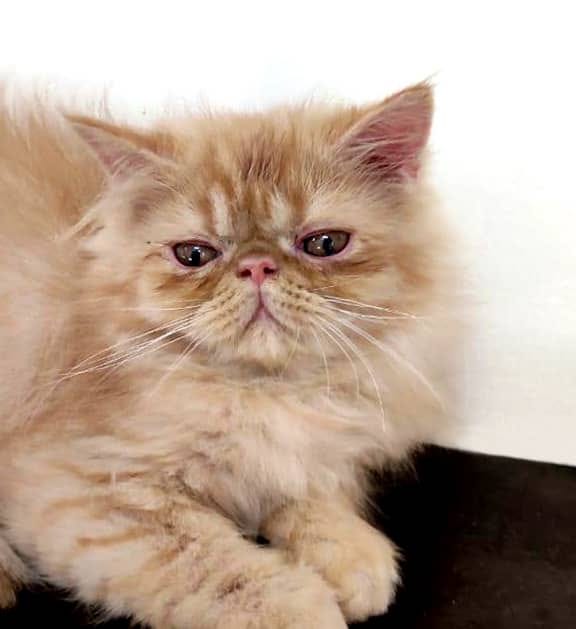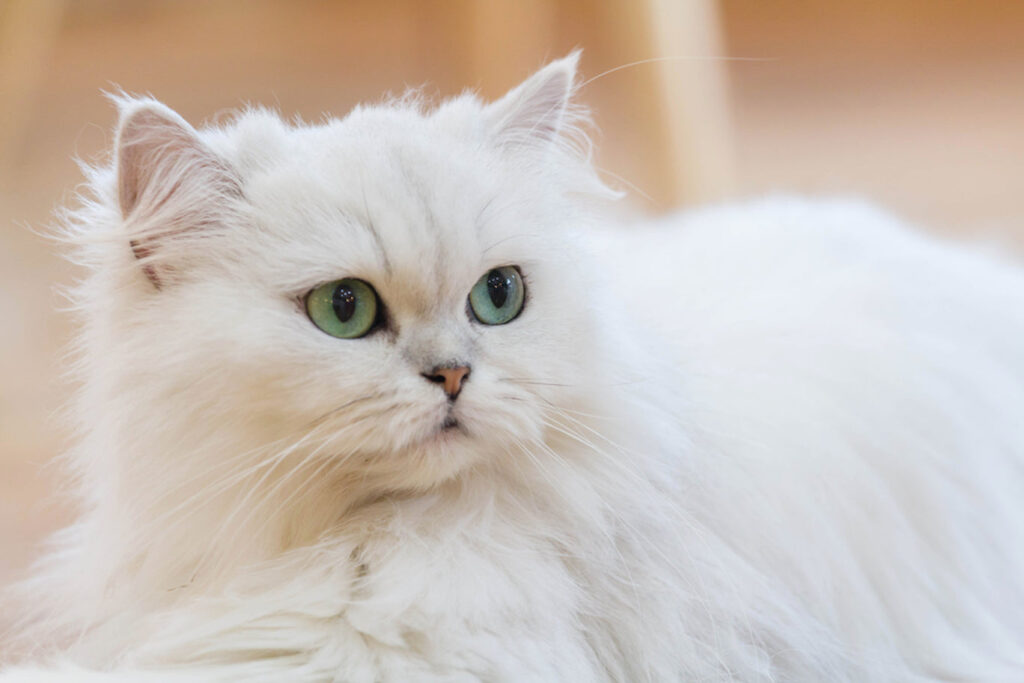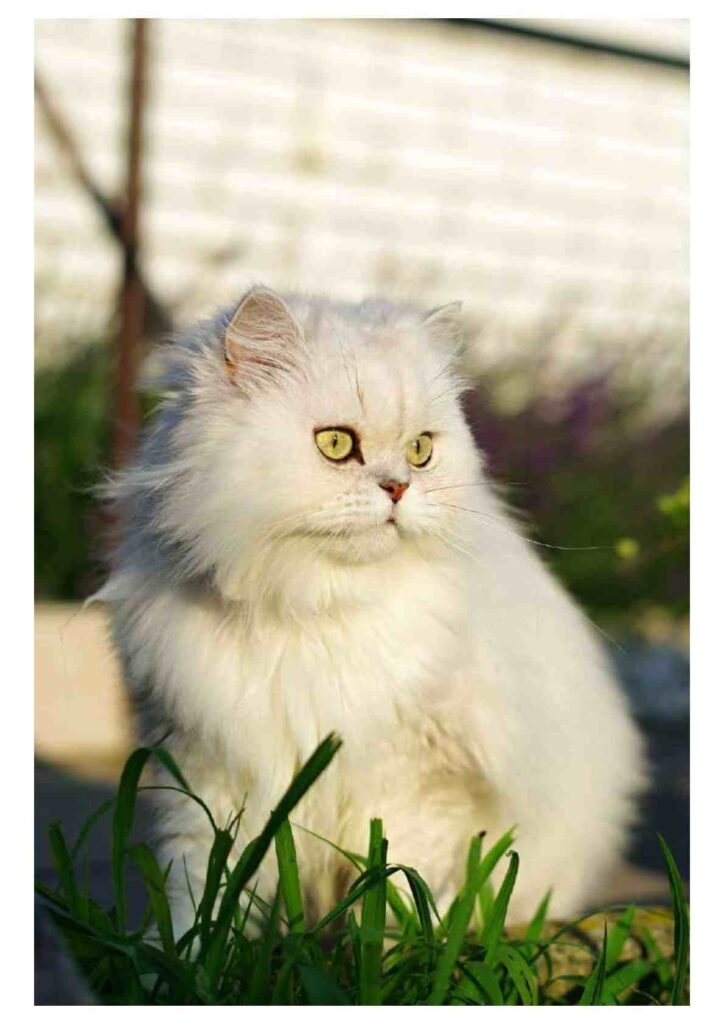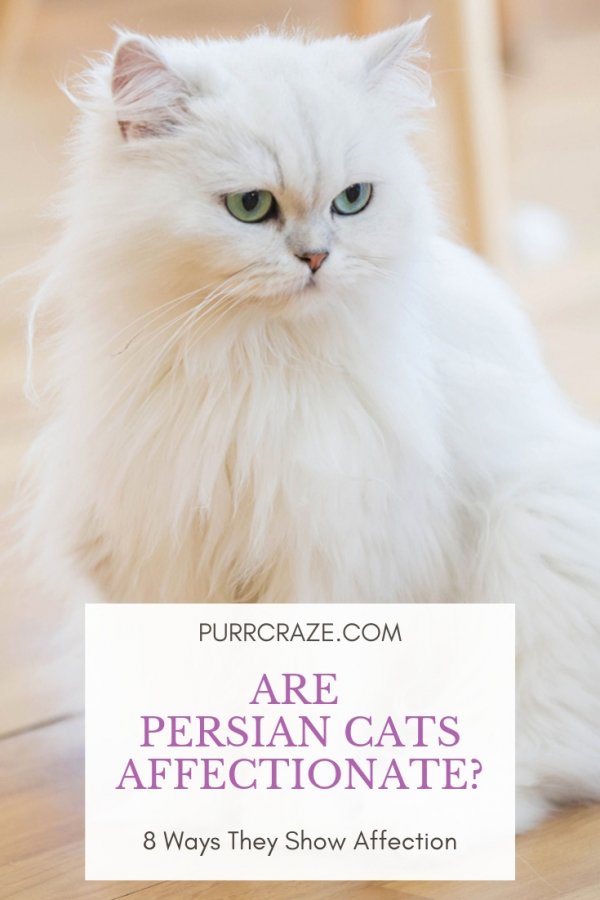The article titled “The Gentle and Loving Nature of Persian Cats” will teach you about the loving and gentle nature of Persian cats. You will learn why these cats are known for their calm and affectionate personalities, making them ideal companions for many pet owners.
Persian cats are known for their calm demeanor and loving nature. They are generally very gentle and enjoy being around their humans. Persian cats love to cuddle and be petted, and they often seek out attention from their owners. They are also known to be patient and tolerant, making them great pets for families with children. Despite their gentle nature, Persian cats can still be playful and enjoy interactive toys and games. Their loving and gentle nature is one of the many reasons why they are adored by cat lovers all over the world.
The Gentle and Loving Nature of Persian Cats
History and Origin
An Introduction to Persian Cats
Persian cats are one of the most popular and beloved breeds of cats in the world. Known for their luxurious long fur and distinctive facial structure, these cats have captured the hearts of many cat lovers. Often described as elegant and regal, Persian cats have a long history and rich heritage that dates back centuries.
The Ancient Origins of Persian Cats
The origins of Persian cats can be traced back to ancient Persia, present-day Iran, where they were highly revered and treasured by royalty and nobility. It is believed that their ancestors were domesticated wildcats that inhabited the mountainous regions of Persia. These cats were considered sacred and were often depicted in works of art and literature.
Evolution of Persian Cats Through History
Over time, Persian cats were introduced to different parts of the world through trade and exploration. They became popular not only in Persia but also in Europe, particularly during the Victorian era. They were highly sought after for their beauty and unique qualities, which led to the development of various Persian cat breeds with different coat colors and patterns.
Physical Characteristics
The Unique Features of Persian Cats
Persian cats are easily recognizable due to their distinct features. One of their most striking attributes is their long and flowing coat, which requires regular grooming to keep it in pristine condition. They also have a stocky and muscular build, with a broad chest and a round, cushion-shaped body. Their incredible fluffiness adds to their overall charm and elegance.
The Different Coat Colors and Patterns
Persian cats come in a wide range of coat colors and patterns, making them even more fascinating. From solid colors like white, black, and cream to more elaborate patterns like tortoiseshell and tabby, there is a Persian cat to suit every taste. Their coats can be either short or long, with the long-haired varieties being the most popular and well-known.
Distinctive Facial Structure of Persian Cats
One of the most defining features of Persian cats is their unique facial structure. They have a short, flat nose with large, round eyes that give them an expression of sweet innocence. Their ears are small and set low on the head, and they have a strong jaw and a prominent chin. These features contribute to their adorable and charming appearance.

Temperament and Personality
Gentle and Loving Nature of Persian Cats
Persian cats are known for their gentle and loving nature. They are affectionate and enjoy being in the company of their owners. They form strong bonds with their human companions and often seek out cuddles and attention. Persian cats are generally calm and laid-back, making them ideal pets for people who prefer a more relaxed and peaceful environment.
Understanding the Personality Traits of Persian Cats
While every cat is unique, Persian cats tend to share certain personality traits. They are generally quiet and reserved, with a graceful and dignified demeanor. They are not overly demanding or hyperactive, preferring a more relaxed and tranquil lifestyle. However, they still enjoy playing and interactive toys can provide them with mental stimulation.
Persian Cats as Family Pets
Persian cats make wonderful family pets and get along well with children and other animals, although they may be more on the reserved side. They are patient and tolerant, and their gentle nature makes them a great choice for families with young children. However, it’s important to supervise interactions between Persian cats and children to ensure that both parties are safe and comfortable.
Grooming and Care
The Importance of Grooming for Persian Cats
One of the most important aspects of caring for a Persian cat is grooming. Due to their long and dense fur, Persian cats require regular grooming to keep their coat in good condition and prevent matting and tangling. Daily brushing is essential to remove loose hair and prevent the formation of hairballs. Additionally, regular bathing and nail trimming are also necessary for maintaining their hygiene.
Tips for Keeping Persian Cats Clean and Well-Groomed
To keep your Persian cat looking its best, it’s essential to establish a regular grooming routine. Start by brushing your cat’s coat daily, using a brush specifically designed for long-haired cats. This will help remove any dirt or debris and keep the coat tangle-free. Pay special attention to the areas around the ears, armpits, and tail, as these are prone to matting. Regular bathing should be done every few weeks using a gentle cat shampoo. Be sure to use warm water and rinse thoroughly to remove any shampoo residue.
Common Grooming Challenges and Solutions for Persian Cats
Grooming a Persian cat can sometimes pose challenges, especially if the cat is not accustomed to regular grooming sessions. Some Persians may be resistant to brushing or bathing, which can make the process more difficult. In such cases, it’s important to be patient and gentle, using treats and positive reinforcement to encourage cooperation. If your cat has particularly stubborn mats or tangles, you may need to carefully trim them with scissors or seek the assistance of a professional groomer.

Health and Genetic Issues
Overview of Common Health Problems in Persian Cats
Like all purebred cats, Persian cats are prone to certain health issues that potential owners should be aware of. Some of the common health problems seen in Persian cats include respiratory issues, eye problems, and dental problems. Due to their flattened faces, Persian cats can experience difficulty breathing, leading to snoring and wheezing. They are also prone to eye conditions such as excessive tearing, corneal ulcers, and cherry eye. Additionally, their facial structure can result in dental issues, including overcrowding and malocclusion.
Genetic Disorders and Breeding Concerns in Persians
Persian cats have a higher risk of developing certain genetic disorders, primarily due to selective breeding and inherent genetic traits within the breed. Polycystic kidney disease (PKD) is a common genetic disorder seen in Persian cats and can lead to kidney failure if not properly managed. Another condition is hypertrophic cardiomyopathy (HCM), a heart disease that can affect Persian cats and may require ongoing monitoring and treatment. Responsible breeding practices, including genetic testing of breeding cats, can help reduce the risk of passing on these genetic disorders to offspring.
Preventive Measures and Care for a Healthy Persian Cat
To ensure the overall health and well-being of your Persian cat, it’s important to provide regular veterinary care and follow preventive measures. Regular check-ups with a veterinarian will help monitor your cat’s health, detect any potential issues early on, and provide appropriate vaccinations and preventive treatments. Maintaining a balanced diet and providing regular exercise will also help keep your Persian cat in good shape. Additionally, maintaining a clean and stress-free environment, as well as proper dental care, is essential for their overall health and longevity.
Feeding and Nutrition
Dietary Needs and Considerations for Persian Cats
Proper nutrition is crucial for the health and well-being of Persian cats. Due to their unique physical characteristics, they have specific dietary needs that should be taken into consideration. Persian cats have a tendency to swallow their food without chewing properly, which can put them at risk of choking or developing gastrointestinal issues. Therefore, it’s recommended to provide them with small, easily manageable kibble or wet food that is specifically formulated for their needs. Additionally, hairball control formulas can help prevent the formation of hairballs in their digestive tract.
Recommended Food Choices for Optimal Health
When choosing food for your Persian cat, it’s important to opt for high-quality, balanced cat food that is appropriate for their age and overall health. Look for products that contain protein as the main ingredient, as well as a good balance of fats and carbohydrates. Avoid foods that contain fillers, artificial additives, or excessive amounts of carbohydrates, as these can lead to weight gain and potential health problems. If you’re unsure about the best food choices for your Persian cat, consult with your veterinarian for personalized recommendations.
Managing Weight and Preventing Obesity in Persian Cats
Persian cats have a tendency to gain weight easily, so it’s important to monitor their food intake and maintain a healthy weight. Obesity can lead to various health issues, including diabetes, joint problems, and cardiovascular disease. To prevent obesity, it’s essential to provide portion-controlled meals and avoid free-feeding. Regular exercise and interactive playtime are also important for keeping your Persian cat active and maintaining a healthy weight.

Training and Behavior
Basic Training Tips for Persian Cats
While Persian cats are not typically known for their trainability like some other breeds, they can still benefit from basic training and socialization. Start by providing a designated litter box and establishing a routine for feeding and playtime. Reinforce positive behavior with treats and praise, and redirect any unwanted behavior with gentle reprimands. While some Persian cats may not readily respond to commands like sit or stay, they can still learn to follow a routine and adjust to certain behaviors with consistent training and positive reinforcement.
Understanding the Behavioral Patterns of Persian Cats
Persian cats have distinct behavioral patterns that are influenced by their breed traits. They are generally calm and laid-back, preferring a quiet and serene environment. They enjoy a routine and may become easily stressed or anxious when faced with sudden changes or disruptions. Persian cats are also known for their need for personal space and alone time, so it’s important to provide them with a safe and quiet area where they can retreat when needed.
Addressing Behavior Issues and Challenges
Like any other pet, Persian cats may occasionally exhibit behavior issues or challenges that need to be addressed. Common behavior issues in Persian cats include aggression, excessive grooming, and inappropriate scratching. These issues can be managed through proper training, environmental enrichment, and providing appropriate outlets for their needs. For example, providing scratching posts and interactive toys can help redirect their focus and prevent destructive behavior. If you’re struggling with behavior issues, consult with a professional cat behaviorist for specialized guidance.
Living Environment
Creating a Comfortable Home for Persian Cats
Creating a comfortable living environment is essential for the well-being of your Persian cat. Provide them with a dedicated space that includes a cozy bed, scratching posts, and interactive toys. Persian cats enjoy elevated spots, such as cat trees or shelves, where they can observe their surroundings. Ensure that your home is free of hazards and potential dangers, such as toxic plants, chemicals, and open windows or balconies.
Indoor vs. Outdoor Living for Persians
Persian cats are generally more suited to indoor living rather than being allowed to roam outdoors. Their luxurious coats require regular grooming and maintenance, and exposure to the elements can lead to matting, tangling, or damage to their fur. Additionally, Persian cats are not known for their hunting or survival skills, making them more vulnerable to accidents or encounters with other animals. To ensure their safety, it’s best to provide a stimulating indoor environment with plenty of toys and opportunities for exercise.
Essential Supplies and Accessories for Persian Cats
To provide the best care for your Persian cat, there are certain supplies and accessories that are essential to have on hand. These include a litter box and litter, food and water bowls, a scratching post or cat tree, a comfortable bed or blanket, grooming tools such as brushes and combs, and interactive toys for mental stimulation. Additionally, it’s important to have a carrier for transporting your cat to and from vet visits or when traveling.

Interaction and Socialization
Playing and Bonding with Persian Cats
Interaction and playtime are crucial for building a strong bond with your Persian cat and providing mental stimulation. Engage in interactive play sessions using toys that mimic prey, such as feather wands or laser pointers. This not only provides exercise but also satisfies their natural hunting instincts. Regular play sessions will also help strengthen the bond between you and your Persian cat, promoting a loving and trusting relationship.
Introducing Persian Cats to Other Pets
If you have other pets in your household, it’s important to introduce them to your Persian cat in a gradual and controlled manner. Start by allowing them to sniff each other’s scents through closed doors and gradually progress to supervised face-to-face interactions. Provide each pet with their own space and resources to prevent conflict and ensure a harmonious coexistence. It’s important to monitor their interactions and step in if any aggression or tension arises.
Behavioral and Emotional Needs of Persian Cats
Persian cats have certain behavioral and emotional needs that should be met for their overall well-being. They thrive in a calm and stress-free environment and may become anxious or fearful in loud or chaotic surroundings. Provide them with plenty of hiding spots and quiet areas where they can feel safe and secure. Regular affection and one-on-one time with their human companions are also important for fulfilling their emotional needs and strengthening the bond between you.
Breeding and Care for Kittens
The Basics of Breeding Persian Cats
Breeding Persian cats requires careful planning and consideration to ensure the health and well-being of both the mother and her kittens. If you’re interested in breeding Persian cats, it’s important to educate yourself about the breeding process, genetics, and responsible breeding practices. Seek guidance from experienced breeders and consult with a veterinarian for advice on proper care and nutrition during pregnancy and birth.
Preparing for a Persian Cat Pregnancy and Birth
When a Persian cat becomes pregnant, it’s crucial to provide her with proper care and nutrition to support a healthy pregnancy and birth. Ensure she has a quiet and comfortable space for nesting and provide her with a balanced diet that meets her nutritional needs. Monitor her closely throughout the pregnancy for any signs of complications and consult with a veterinarian to ensure a successful and safe birth.
Newborn Care and Development Stages
Once the kittens are born, it’s important to provide them with appropriate care and ensure their healthy development. During the first few weeks, the mother will take care of most of the kittens’ needs, including feeding and grooming. Observe the kittens closely for any signs of illness or developmental issues and provide a warm and secure environment for them to grow. It’s recommended to consult with a veterinarian for guidance on vaccinations, deworming, and overall care of the kittens.

Showing and Competing
The World of Persian Cat Shows and Competitions
Persian cats are a popular breed in the world of cat shows and competitions. These events provide an opportunity for breeders and owners to showcase their cats and compete against other breeders for titles and recognition. Persian cat shows often include various categories, such as best in breed, best of color, and best of show. These events not only celebrate the unique beauty and qualities of Persian cats but also serve as a platform for networking and learning within the cat fancy community.
Preparing Persian Cats for Shows
Preparing a Persian cat for a show requires careful grooming and presentation to showcase their best qualities. This includes regular bathing, brushing, and trimming to ensure their coat is in peak condition. Additionally, proper handling and socialization are important to ensure that the cat is comfortable and relaxed during the show. Familiarize yourself with the specific requirements and standards set by the show organizers to ensure that you are adequately prepared.
Judging and Evaluating Persian Cats
Persian cat shows involve a panel of experienced judges who evaluate each cat based on pre-established breed standards. The judges assess various aspects of the cat’s appearance, including coat quality, conformation, and overall presentation. Each cat is given a score based on their adherence to the breed standard, and points are awarded accordingly. The cat with the highest score in each category is declared the winner.
Famous Persian Cats in History
Notable Persian Cats Throughout the Years
Throughout history, there have been several famous Persian cats that have left a lasting legacy. One such cat is Choupette, the beloved pet of the late fashion designer Karl Lagerfeld. Choupette gained international fame and even had her own Instagram account, showcasing her luxurious lifestyle. Another famous Persian cat is Smoothie, known for her stunning photogenic qualities and millions of social media followers.
The Influence of Persian Cats in Art and Culture
Persian cats have had a significant influence on art and culture throughout the centuries. They have been depicted in paintings, sculptures, and even literature, often symbolizing beauty, grace, and elegance. Persian cats have also inspired countless artists and writers, serving as muses for their creative works. Their iconic appearance and unique qualities continue to captivate and inspire people from all walks of life.
Legendary Tales and Stories Involving Persian Cats
Persian cats have been associated with various legendary tales and stories throughout history. In Middle Eastern folklore, these cats are often depicted as mystical creatures with special powers and abilities. Persian cats are also said to bring good fortune and luck to their owners, leading to their esteemed status. These tales and stories have added to the allure and mystique surrounding Persian cats, further enhancing their place in popular culture.
Myths and Misconceptions
Debunking Common Myths About Persian Cats
Like any other breed, Persian cats have often been subject to myths and misconceptions. One common myth is that Persian cats are high-maintenance and require excessive grooming. While regular grooming is necessary, it can be manageable with proper care and routine. Another myth is that Persian cats are not active or playful, when in fact they enjoy interactive play sessions and engage in gentle play behavior.
Separating Fact from Fiction
It’s important to separate fact from fiction when it comes to Persian cats to ensure that potential owners have accurate information. While Persian cats do have specific care requirements, with proper knowledge and commitment, they can make wonderful pets. Additionally, not all Persian cats have the same temperament or personality, as individual cats may vary. It’s important to consider the unique needs and characteristics of each cat before making a decision.
Dispelling Stereotypes and Misunderstandings
As with any breed, it is important to recognize that stereotypes and misunderstandings can lead to generalizations that may not accurately represent the breed as a whole. While Persian cats are known for their gentle and loving nature, it’s important to remember that each cat is an individual with their own personality traits and needs. Taking the time to understand and appreciate the unique qualities of Persian cats will help dispel stereotypes and create a more accurate perception of this beloved breed.
Conclusion
In conclusion, Persian cats are treasured for their gentle and loving nature, unique physical features, and rich history. They bring joy and happiness to the lives of their owners and have a strong presence in art, culture, and popular culture. Whether as companions, show cats, or family pets, Persian cats continue to captivate hearts around the world with their undeniable charm and elegance. By providing them with the care, love, and attention they deserve, you can experience the joy of sharing your life with one of these extraordinary felines.
Frequently Asked Questions:
- Are Persian cats a good choice for households with children?
- Yes, Persian cats are generally good with children and make great family pets. However, it’s important to supervise interactions and teach children how to handle cats gently.
- Do Persian cats require a lot of grooming?
- Persian cats have long and dense fur, which requires regular grooming to prevent matting and tangling. Daily brushing and routine bathing are necessary to keep their coat in good condition.
- Are Persian cats prone to certain health issues?
- Yes, Persian cats are prone to certain health issues, including respiratory problems, eye conditions, and dental issues. Regular veterinary care and preventive measures are essential for their overall health.
- Can Persian cats be trained?
- While Persian cats may not be as responsive to training as some other breeds, they can still learn to follow routines and adjust to certain behaviors through consistent training and positive reinforcement.
- Are Persian cats suitable for outdoor living?
- Persian cats are generally more suited to indoor living due to their long and delicate coats. Exposure to the elements can lead to matting and damage to their fur. Providing a stimulating indoor environment is important for their well-being.
- What are the basic supplies needed for Persian cats?
- Essential supplies for Persian cats include a litter box, food and water bowls, scratching posts, grooming tools, and interactive toys for mental stimulation.
- Can Persian cats be shown in cat shows?
- Yes, Persian cats can be shown in cat shows and competitions, where they are evaluated based on breed standards. Proper grooming and presentation are important for showcasing their best qualities.
- Are Persian cats good with other pets?
- Persian cats can get along well with other pets if proper introductions and appropriate socialization are done. Supervision and monitoring of their interactions are important to ensure a harmonious coexistence.
- Are Persian cats high-maintenance?
- While Persian cats do have specific care requirements, proper grooming and maintenance can be manageable with routine and commitment. Daily brushing and regular bathing are key to keeping their coat in good condition.
- Do Persian cats have a long lifespan?
- Persian cats typically have a lifespan of around 12 to 16 years, although some may live longer with proper care and a healthy lifestyle. Regular veterinary care, balanced nutrition, and a stress-free environment are important for their overall well-being.
